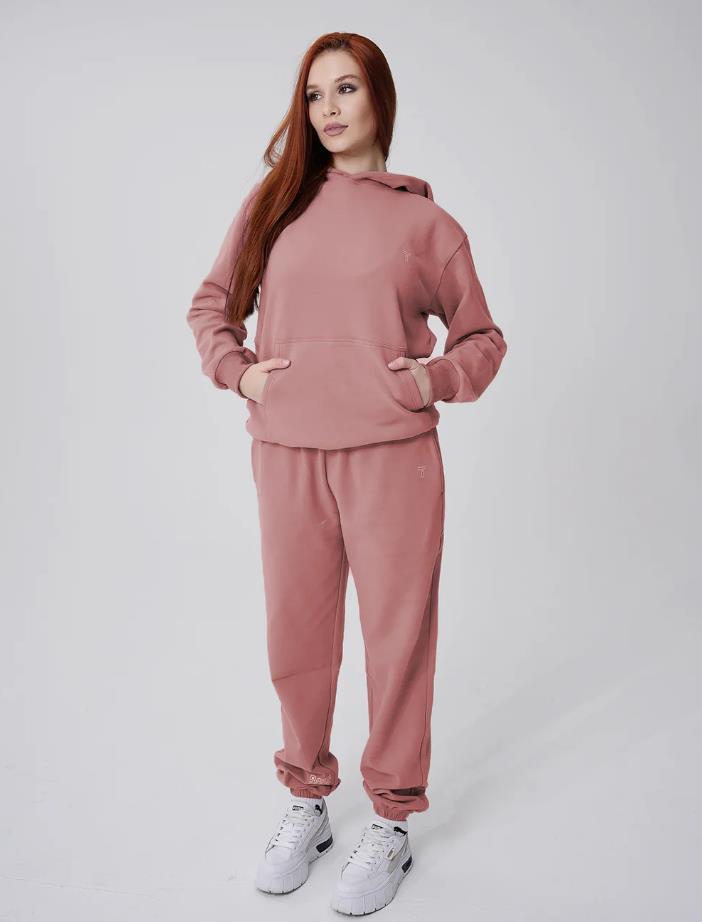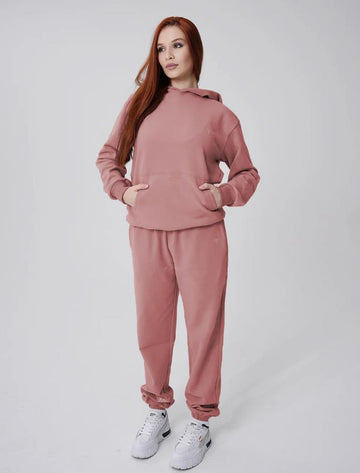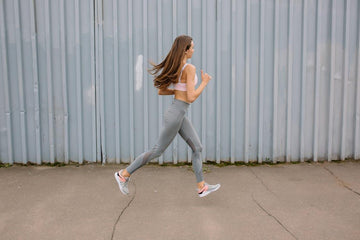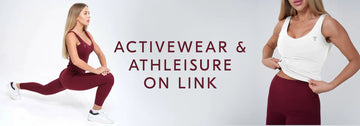
When it comes to staying active, the comfort and functionality of your attire are paramount. At Truth Creation, we understand that the right materials can make all the difference in enhancing your performance and overall workout experience. This guide explores the top materials for activewear, providing you with insights into their benefits and applications.
Table of Contents
- Key Takeaways
- Guide to the Best Materials for Women's Activewear for Comfort and Performance
- Advanced Technology in Activewear Materials
- The Impact of Weave and Knit Patterns on Performance
- Eco-Friendly Innovations in Activewear
- Smart Fabrics: The Future of Activewear
- Conclusion
- FAQs
Key Takeaways
- Durability and Comfort: Polyester and nylon lead the way in durability while providing the comfort needed for extended workouts.
- Sustainability: Bamboo fiber stands out as an eco-friendly option without compromising performance.
- Versatility: Merino wool offers temperature regulation that is crucial for outdoor and winter activities.
Guide to the Best Materials for Women’s Activewear for Comfort and Performance
Choosing the right material for women’s activewear is crucial for comfort and performance. The best fabrics are those that offer breathability, moisture-wicking properties, flexibility, and durability. Here are some top choices:
Polyester: A powerhouse in the activewear world, polyester stands out for its sweat-wicking properties, durability, and quick-drying capabilities. It’s a synthetic fiber that resists shrinking and wrinkles, making it a staple for any workout gear.
Nylon: Nylon is known for its high durability and excellent stretch. Nylon is high performance fiber. Renowned for its strength and stretchability, nylon is soft to the touch yet strong enough to withstand the toughest exercises. It’s also moisture-wicking and highly breathable, keeping you dry as you push through your limits.
Spandex (Lycra/Elastane): Spandex provides exceptional elasticity, allowing for a full range of motion. Often blended with other fabrics, spandex is a must-have in activewear for its ability to retain shape even after rigorous stretching. This fabric ensures your activewear fits snugly and moves with you.
Bamboo Fiber: Bamboo fabric is an eco-friendly and soft, that offers natural antibacterial, breathability and moisture-wicking properties, making it ideal for temperature regulation and odor resistance. It’s perfect for those looking for sustainable activewear options. It’s also hypoallergenic and incredibly soft, making it ideal for sensitive skin.
Merino Wool: Merino wool is excellent for temperature regulation. For cooler climates, merino wool is unmatched in warmth, breathability and cool in the heat, while its natural moisture-wicking properties keep you dry. It’s perfect for winter exercises because it’s also quite good at managing moisture and resisting odours.
Each of these materials brings unique benefits, ensuring that these women’s activewear and athleisure supports your fitness goals by providing the ultimate in comfort and performance.
Advanced Technology in Activewear Materials
The innovation in activewear materials extends beyond basic fabrics to include advanced technologies that enhance athlete performance and comfort. Fabrics are now being engineered to include features such as UV protection properties, anti-odor technologies, and enhanced breathability, which are crucial for both competitive athletes and casual exercisers.
Temperature Control Technologies: Modern activewear incorporates phase change materials (PCMs) that absorb, store, and release heat for optimal thermal comfort. This technology is integrated into fabrics to regulate body temperature, keeping athletes cool in summer and warm in winter.
Compression Fabrics: These materials are designed to improve circulation and muscle support, which can enhance recovery times and performance. Compression fabrics are particularly beneficial during long-duration sports or activities that strain-specific muscle groups.
Water-Resistant Coatings: For outdoor sports, water-resistant coatings are applied to activewear to keep athletes dry during rain or mist. This technology does not affect the breathability of the fabric, maintaining comfort while protecting from the elements.
Driven by a commitment to excellence and innovation, Truth Creation seeks to revolutionize the activewear industry. This ethos is deeply embedded in our company culture and is evident in every product we offer, especially showcased in our new collection. We are not just creators of apparel; we are pioneers in a movement towards sustainable fashion. Every fabric choice and design element reflects our dedication to environmental responsibility and technological advancement.
The Impact of Weave and Knit Patterns on Performance
The structure of how fabrics are woven or knitted plays a significant role in their functionality. The weave or knit pattern affects everything from the stretchability of the material to its breathability and moisture-wicking properties.
Mesh Inserts: Many activewear designs include mesh inserts in strategic areas such as underarms or along the back. These inserts are typically made from loosely woven or knitted fabrics that enhance breathability and moisture wicking, ideal for high-intensity workouts.
Seamless Technology: Seamless knitting technology reduces the seams on garments, which decreases friction and increases comfort. This technology is particularly useful in preventing skin irritation during repetitive motion sports like running or cycling.
Eco-Friendly Innovations in Activewear
As sustainability becomes more crucial in the textile industry, activewear brands are increasingly turning to eco-friendly materials and practices. This shift not only helps reduce environmental impact but also appeals to environmentally conscious consumers.
Recycled Fabrics: Many companies now produce activewear using recycled plastics and other materials. These fabrics offer the same performance characteristics as their non-recycled counterparts but have a much lower carbon footprint.
Natural Dyes: The use of natural dyes in activewear is growing as brands seek to reduce the use of chemicals in their products. Natural dyes are derived from plants, minerals, and other natural sources, providing a sustainable alternative without compromising fabric quality.
Smart Fabrics: The Future of Activewear
The frontier of activewear materials is expanding into the realm of smart fabrics, which are equipped with sensors and other technologies to monitor health metrics such as heart rate, muscle performance, and even stress levels.
Integrated Sensors: These smart fabrics can track athletic performance and provide feedback directly to a connected device, allowing athletes to monitor their progress and adjust their training accordingly.
Energy-Harvesting Materials: Some advanced fabrics are capable of harvesting energy from the wearer’s movements, which can then power small devices like watches or fitness trackers. This innovative approach not only enhances convenience but also promotes sustainable energy use.
As activewear continues to evolve, the materials and technologies used to craft these garments become more crucial to delivering not just comfort and style, but also a significant performance advantage and environmental sustainability. Embracing these materials can lead to improved athletic performance and a reduced ecological footprint, aligning with modern values of health and environmental consciousness.
Conclusion
Choosing the right material for your activewear is crucial not just for performance but also for your comfort and the durability of your apparel. At Truth Creation, we understand the importance of quality and sustainability in fitness apparel. Contact us to discover more about integrating the best materials into your activewear line and enhancing your workout experience.
FAQs
What makes polyester ideal for activewear?
Polyester is favored for its durability, quick drying, and resistance to shrinking and wrinkles, making it perfect for the gym or outdoor activities.
Why is moisture management important in activewear materials?
Effective moisture management enhances comfort and prevents chafing during workouts, keeping the skin dry and cool.
Can bamboo fabric withstand heavy workouts?
Yes, bamboo fabric is not only strong and durable but also offers excellent moisture-wicking and antibacterial properties suitable for intense workouts.
Is spandex necessary in all types of activewear?
While not necessary for all, spandex is essential in high-mobility activewear due to its superior elasticity and ability to maintain garment shape.
How can I extend the lifespan of my merino wool sportswear?
Merino wool should be washed in cold water with a mild detergent and laid flat to dry to maintain its quality and shape.
Are there eco-friendly options for winter activewear materials?
Merino wool is an excellent sustainable option, providing warmth and breathability with minimal environmental impact.




